- Home
- Resources
- Safe work procedures
- Drilling into non-friable ACM using an H rated industrial HEPA filter vacuum to control airborne fibres and dust
Asbestos
Drilling into non-friable ACM using an H rated industrial HEPA filter vacuum to control airborne fibres and dust
This safe work procedure describes the preparation, process and work method for drilling holes into non-friable (bonded) asbestos-containing material (ACM) such as fibro, hardiplank, compressed sheeting, tilux, using an H rated industrial HEPA filter vacuum to control airborne fibres and dust.
Equipment
A range of equipment should be used to control the risk of exposure to airborne asbestos fibres, including:
- 200 μm plastic drop sheets
- rolls of duct or gaffer tape
- plastic bags 1200 x 900 mm (200 μm) labelled with a warning (e.g. CAUTION: Asbestos, Do not damage or open bag. Do not inhale dust.)
- barricading or hazard tape
- bucket three-quarters full of water
- atomiser bottle with water
- access to a continuous supply of water
- cordless drill or hand drill
- drill bits suitable for the task
- tape measure
- rags or disposable wipes
- H rated industrial HEPA filter vacuum that meets AS4260 and AS/NZS 60335.2.69:2003
- shadow vacuuming attachments
- PVA glue (sealant) and a small paint brush
- marker pen
- access to the first aid kit
- spare PPE
- safety lace less work boots.
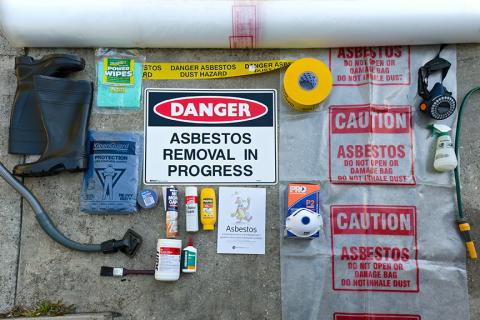
Some of the required equipment.
Safe work procedures
Follow the steps depicted below and view the example videos.
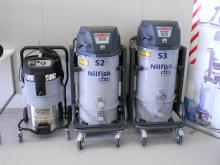
Step 1
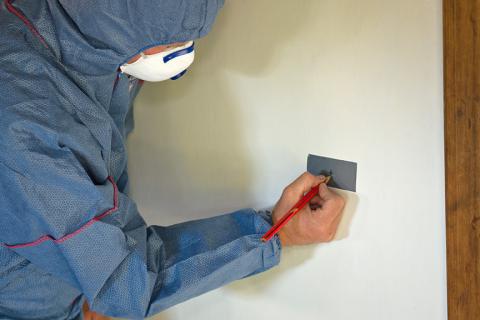
1. Place duct tape over intended drilling point. Mark the proposed hole for drilling on the duct tape.
Step 2
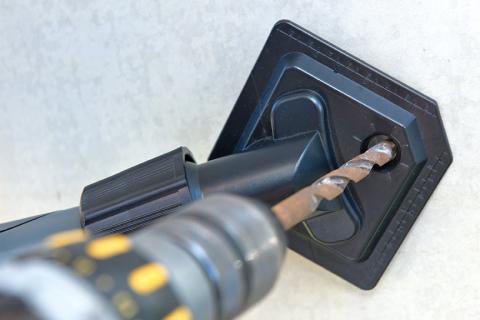
2. Fit a drilling nozzle attachment to the H rated industrial HEPA filter vacuum hose, position the drill bit on the point to be drilled.
Step 3
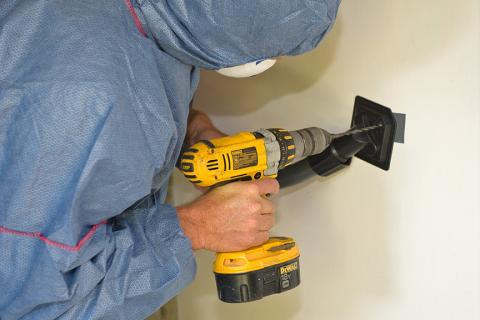
3. Turn on the vacuum cleaner and commence drilling the holes, ensure that the drilling nozzle attachment is firmly positioned flat against the sheeting.
Step 4
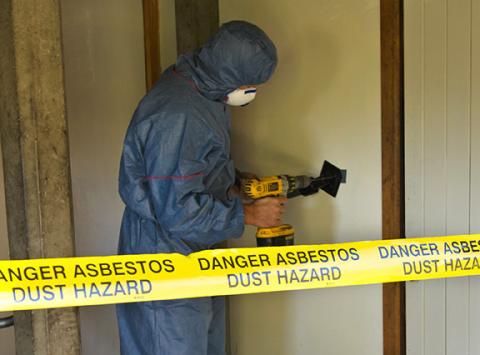
4. Do not remove until the drilling is complete. This procedure is called shadow vacuuming.
Step 6
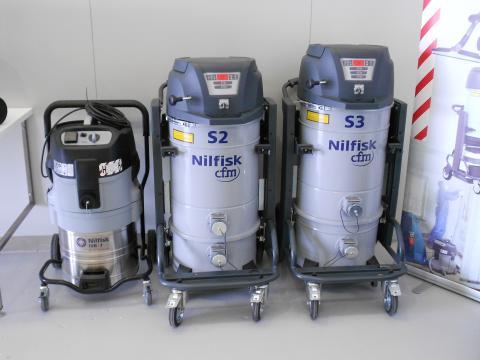
6. Decontaminate the vacuum and tools by detaching the dust brush from the vacuum hose and vacuum the brush bristles. Seal the vacuum cleaner hose entry point with duct tape.
Step 7
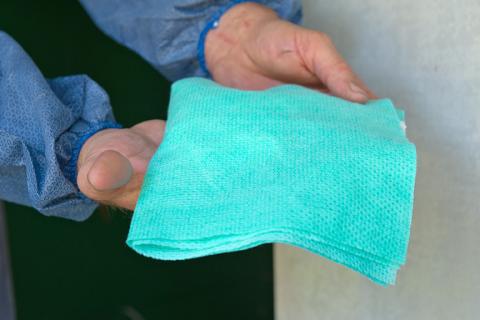
7. Wet wipe all external surfaces of the vacuum cleaner and hose. All wet wipes and rags are to be disposed of into an approved asbestos waste bag which is correctly labelled and is 200 µm thick.
View the film extract Drilling of asbestos walls and ceilings from Asbestos Awareness - an informative guide to asbestos.
- Home
- General information
- What is asbestos?
- How was asbestos used?
- Are there health effects?
- The risks of exposure
- Health monitoring
- Legislation and codes of practice
- Low density asbestos fibre board
- Asbestos contaminated dust or debris
- Fires
- Cleaning up after floods and storms
- Importation prohibited
- Government and agency roles
- Asbestos in government assets
- Know where asbestos is
- Removing or disturbing asbestos
- Practical guidance
- Resources
- Asbestos alerts
- Asbestos news
- Codes of practice
- Guidance
- Films
- Asbestos safety session 2021
- Asbestos safety session 2020
- Cleaning Asbestos Roofs
- Shadow vacuuming with a H-Class vacuum cleaner
- Use and maintenance of a H-Class vacuum cleaner
- Identifying low density asbestos fibre board hazards and risks
- Working safely with asbestos for the home renovator
- How to properly wear personal protective equipment for airborne contaminants
- Personal protective equipment
- Dear Dad - An asbestos awareness film
- Clear and present danger: Asbestos exposed
- Uses and applications of asbestos - an extract from a film by Parsons Brinckerhoff
- Asbestos health issues - an extract from a film by Parsons Brinckerhoff
- Safe work procedure - storm and wind damage cleanup
- Drilling into asbestos walls and ceilings
- Asbestos - Removing switchboard panels
- Decontamination procedure, personal decontamination and cleanup procedures
- Asbestos awareness
- Safe work procedures
- Preparation before commencing the task
- Preparing and painting corrugated asbestos cement roof and fences
- Drilling into non-friable asbestos using a thickened substance to control airborne fibres and dust
- Drilling into non-friable ACM using an H rated industrial HEPA filter vacuum to control airborne fibres and dust
- Removing a small package electrical switchboard
- Cleanup and disposal
- Safe cleanup of storm damaged materials that may contain asbestos
- Frequently asked questions for homeowners and the general public
- Podcasts
- Strategies
- Working Safely with Asbestos Guide
- Asbestos awareness week 2025
- Asbestos management compliance campaign
- Induction and safety training for unlicensed work
- Sanctions